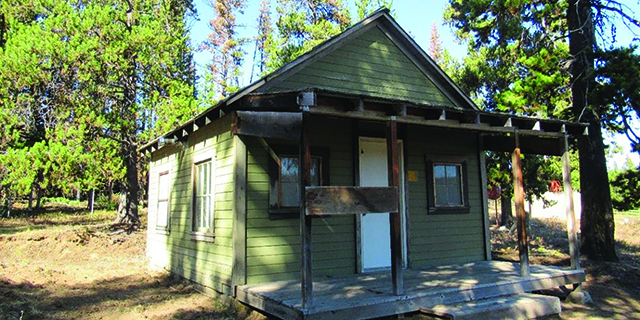Other views | It’s time for a time change
Published 10:41 am Friday, April 12, 2019
The Oregon Senate last week took a step toward ending our generally pointless (and potentially harmful) twice-annual ritual of changing our clocks, joining a resistance that seems to be gaining momentum across the nation.
By a 23-4 margin, senators approved Senate Bill 320, which would move Oregon to year-round daylight saving time. The bill isn’t perfect (we have some quibbles with it), but it still is worth noting as an important first step forward.
Trending
Evidence continues to mount that these time switches (spring ahead an hour every spring; fall back an hour every fall) come with risks to our health and wreak havoc with sleep-deprived Americans (which include quite a large number of us).
And the reasons we’ve been given to justify the time switches simply don’t pan out. For starters, daylight saving time never was intended as a boon to farmers: In the words of a memorable report on “Last Week Tonight with John Oliver”: “Cows don’t care what time it is.” And crops get exactly the same amount of light every day, regardless of whether it’s daylight saving or standard time.
Daylight saving time wasn’t implemented on a large scale until 1916, when Germany and its World War I ally Austria-Hungary set clocks ahead an hour to save on energy costs. Other nations, including the United States, followed suit. After World War I, other nations abandoned the idea, but not the United States. The idea of daylight saving time really picked up steam during the energy crisis of the 1970s.
But here’s the deal: Evidence suggests that daylight saving time hasn’t saved on energy costs. It may reduce lighting use, but that’s offset by increased costs for air conditioning and heating, and increased consumption of gasoline.
So the time was right, so to speak, for Senate Bill 320, which now moves to the House. If the bill becomes law, all but one of Oregon’s 36 counties would move to year-round daylight saving time — in other words, we’d spring forward and never fall back. (Malheur County is the exception; that county actually is on Mountain time so that it syncs with nearby Boise, Idaho. That county would continue to switch between daylight time and standard time, to stay in sync with Idaho.)
The bill that passed the Senate isn’t exactly a stirring denunciation of the changing of the clocks: It would only become effective if Congress approves the time change and if Washington and California also adopt daylight time on a permanent basis (the good news there is that proposals to do exactly that are making progress in both those states).
Trending
And a provision originally in the bill, calling for a public vote on the issue, was eliminated. While we appreciate the Senate’s willingness to take this matter into its own hands, we have to admit that we thought a vote on this would have been fun.
In such a vote, we could have gauged popular sentiment on the main dispute that faced senators in last week’s deliberations: whether the state should shift permanently to daylight or standard time.
While most senators favored daylight time (which is our preference as well), the arguments raised by others supporting standard time have some merit. For one thing, staying on daylight time year-round could have an effect on some religious observances. In Judaism, for example, the daily morning prayer is held shortly after sunrise. In January, the sun wouldn’t rise until nearly 9 a.m. in western Oregon, making it difficult for some worshipers to make it to work on time.
But, really, on some level, the question of daylight vs. standard time doesn’t matter that much: The point here is to do away with the time switch. Senate Bill 320 helps loosen the bonds of this time tyranny.









